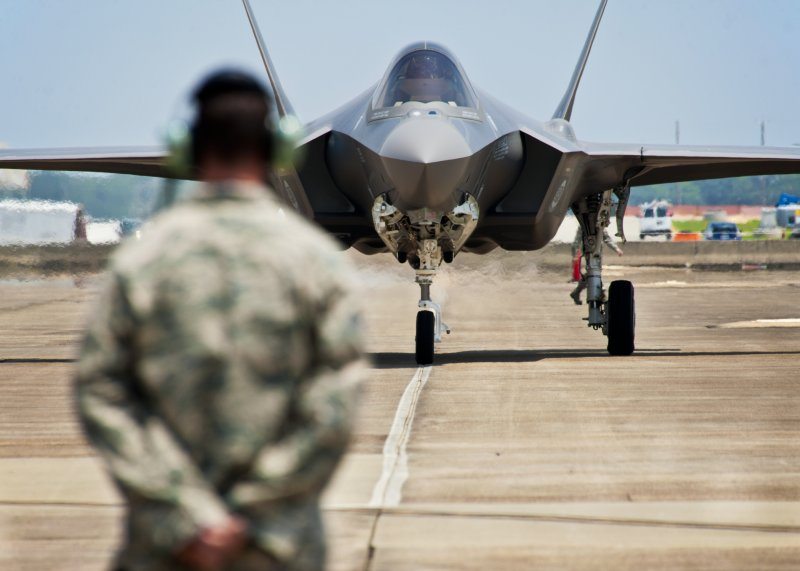British Defence Minister Philip Hammond voiced concern on Thursday about possible cuts or delays in the US F-35 fighter program as London plans to equip a future aircraft carrier with the stealthy aircraft.
In a visit to the US capital, Hammond said he wanted to hear from Defense Secretary Leon Panetta about the potential effect of a new US military strategy and budget plan on the future of the F-35 Joint Strike Fighter.
“One of the things I hope to understand in the meetings I am to have later today is what, if any, impact the announcements being made today will have on the Joint Strike Fighter program,” Hammond told an audience at the Atlantic Council, a Washington think tank.
Hammond’s visit coincided with the unveiling of a revised American military strategy that calls for a “leaner” force as the Pentagon plans for $487 billion in cuts over the next decade.
At the Pentagon’s presentation Thursday, officials gave no details as to possible changes to the F-35 program, which has been plagued by cost overruns and delays due to a spate of technical problems. US officials have acknowledged that the pace of production will likely be scaled back but have yet to offer specifics.
After Hammond’s meeting with his American counterpart, the Pentagon issued a statement confirming the two discussed the US strategic review but made no mention of the F-35 jet.
The Pentagon said the two defense chiefs signed an agreement on “carrier cooperation” that will allow the United States to help Britain train crews and pilots as the country’s new aircraft carrier will not be ready for years.
“Since the British currently are regenerating their carrier capability, it also provides a framework for the US to assist our close ally in developing a robust and modern carrier force,” press secretary George Little told AFP in an email.
Britain, one of a group of countries supporting the F-35 program, is counting on the Joint Strike Fighter to fly from its future aircraft carrier, the Prince of Wales.
The Pentagon has commissioned the construction of three versions of the plane, including one designed to land on an aircraft carrier.
“We are committed to purchasing the carrier variant,” Hammond said at the Atlantic Council event.
“But of course, if there is any slippage in the program, any reduction in the US numbers required could have impacts on availability and on unit costs,” said Hammond, citing pressures on Britain’s defense budget.
“As you may know we are already under some pressure from public opinion in the UK over the fact that we are going to build and launch carriers some years before we have any aircraft to fly off with,” he said.
“Really, it’s a caricaturist’s dream — a carrier with no jets to fly on them. So the prospect of any further delays to the carrier variant would be of concern to us.”
At an estimated $385 billion, the F-35 is the Pentagon’s most expensive weapons program ever.
The program calls for building 2,443 of the fighters, with each plane costing $113 million in fiscal year 2011 dollars.
Manufactured by defense giant Lockheed Martin, there are plans for three models: a standard variant of the aircraft, an F-35A, a short take-off version, the F-35B, and a fighter designed to fly from aircraft carriers.
Britain has scrapped plans to buy the short take-off F-35B and reportedly plans to buy 138 F-35 fighters.











